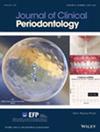Comparison of Ultrasonography, CBCT, Transgingival Probing, Colour-Coded and Periodontal Probe Transparency With Histological Gingival Thickness: A Diagnostic Accuracy Study Revisiting Thick Versus Thin Gingiva
Abstract
Aim
To assess the reliability of ultrasonographic, cone beam computed tomographic (CBCT), probe transparency and transgingival probing (TGP) methods in evaluating gingival thickness (GT), compared with the gold standard histological assessment.
Methods
Sixteen fresh cadaver heads with intact gingivae were used. The sequence for GT measurement included CBCT, ultrasonography, probe transparency, TGP and histology. Both stainless steel periodontal probe and colour-coded probes were used for transparency. TGP involved a calibrated endodontic spreader, and histologic samples served as a comparative standard. Primary outcomes evaluated accuracy in GT measurement, while secondary outcomes assessed agreement among methods and established an optimal threshold for thin versus thick gingiva.
Results
One hundred and fifteen teeth were examined, yielding a mean GT of 1.34 mm histologically. US and CBCT underestimated GT (means of 1.25 mm and 1.13 mm, respectively), while TGP overestimated (1.51 mm). Correlations (r = 0.88–0.98) and ICC values (0.73–0.95) indicated strong inter-method agreement. Regression models significantly estimated histological GT from US, CBCT and TGP. A new 1.18 mm cut-off, based on histology, improved diagnostic accuracy over the traditional 1 mm threshold.
Conclusions
While histology remains the GT reference standard, US, CBCT and TGP achieved clinically acceptable accuracy. US showed the highest agreement with histology, followed by TGP and CBCT. The study supports US as the most practical non-invasive tool, although CBCT and TGP remain viable options. Further clinical validation is recommended, acknowledging the limitations of cadaveric models in reflecting in vivo conditions.


 求助内容:
求助内容: 应助结果提醒方式:
应助结果提醒方式:


